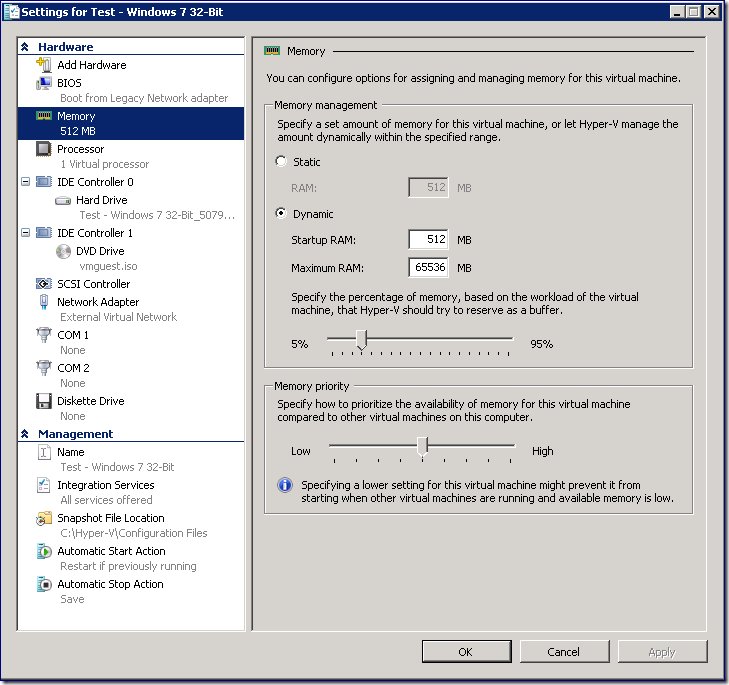What happens if you enable dynamic memory on an unsupported guest operating system?
Here is a good question – what happens if you install Windows Server 2008 R2 SP1 beta, open the settings on a virtual machine, enable dynamic memory – but the guest operating system does not support dynamic memory?
The first thing to know is that – yes, you can indeed do this. Hyper-V does not know what operating system is installed inside the virtual machine – and will allow you to configure anything when the virtual machine is off.
Regardless of whether the guest operating system is officially supported for dynamic memory (and you have not yet upgraded the integration services) or not – the result will be the same. The virtual machine will be booted with the amount specified by the Startup RAM value – and will never get any more memory. The guest operating system will not be adversely affected in any way by the fact that it has been configured with dynamic memory.
What this means is that while I recommended that you upgrade integration services and then enable dynamic memory – you can, in fact, do it the other way around. The primary reason why I recommend the order that I did is that once you enable dynamic memory you will want to set the Startup RAM quite low – which can cause poor performance while you are trying to get the integration services upgraded.
Cheers,
Ben
